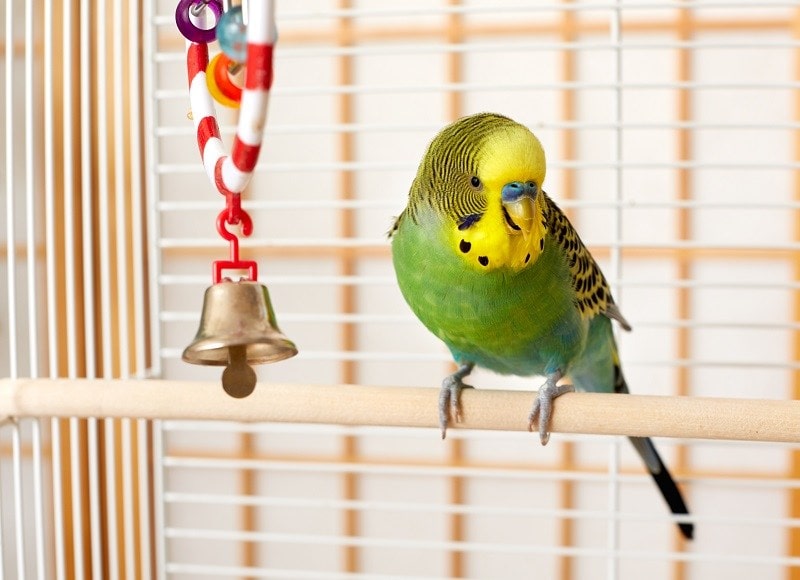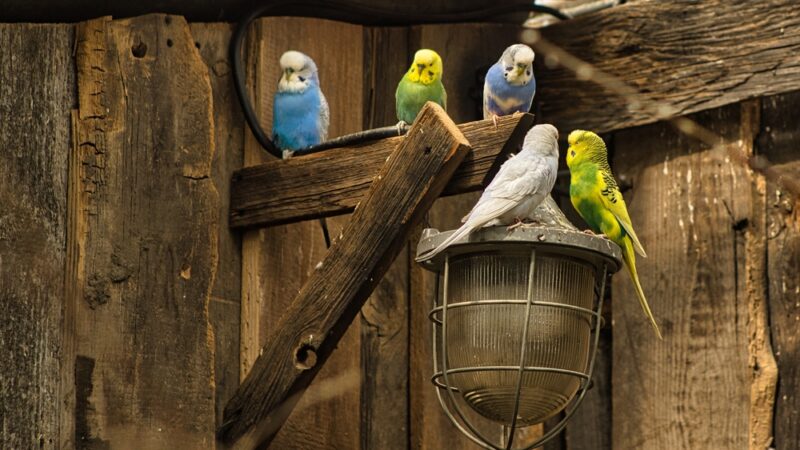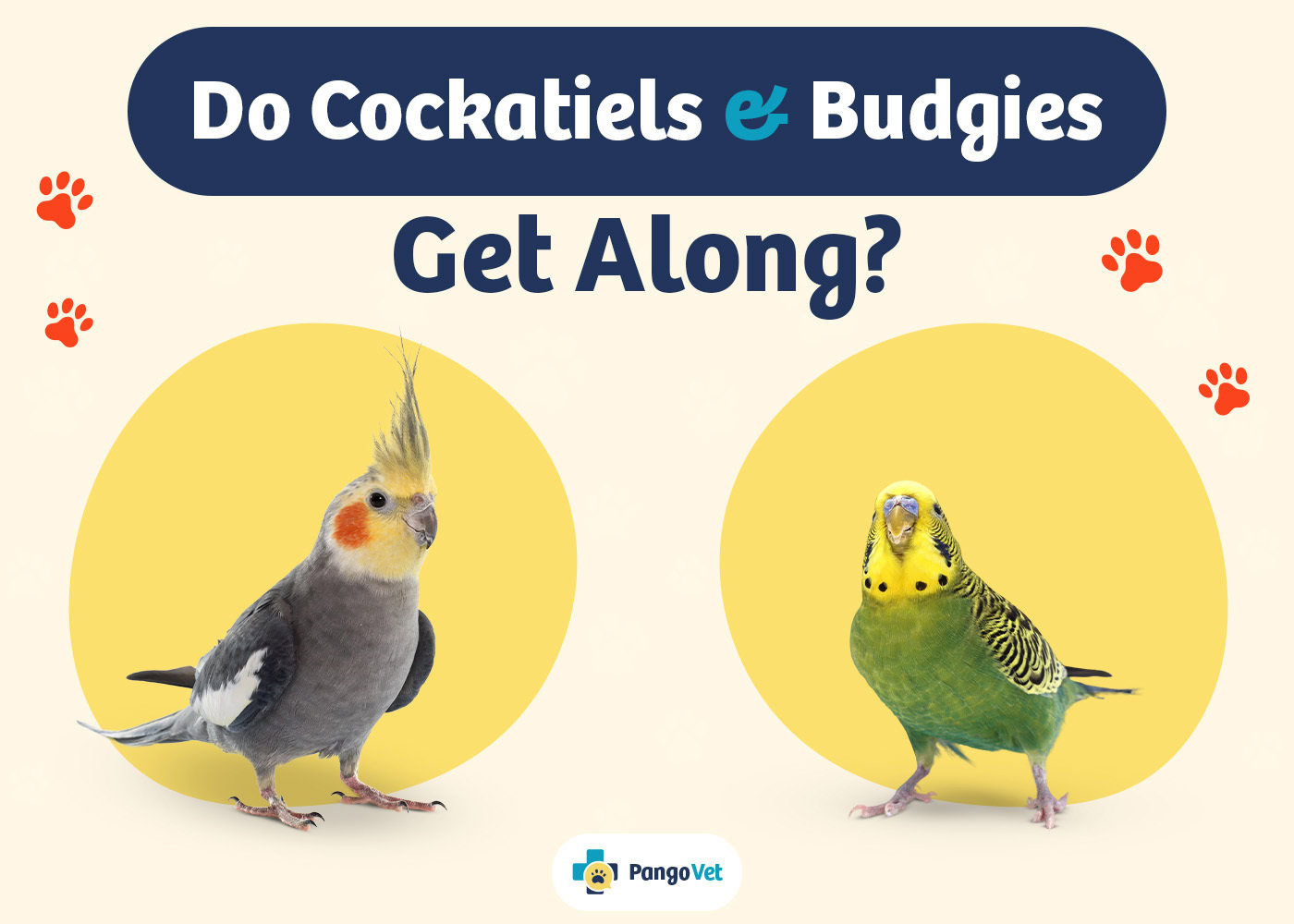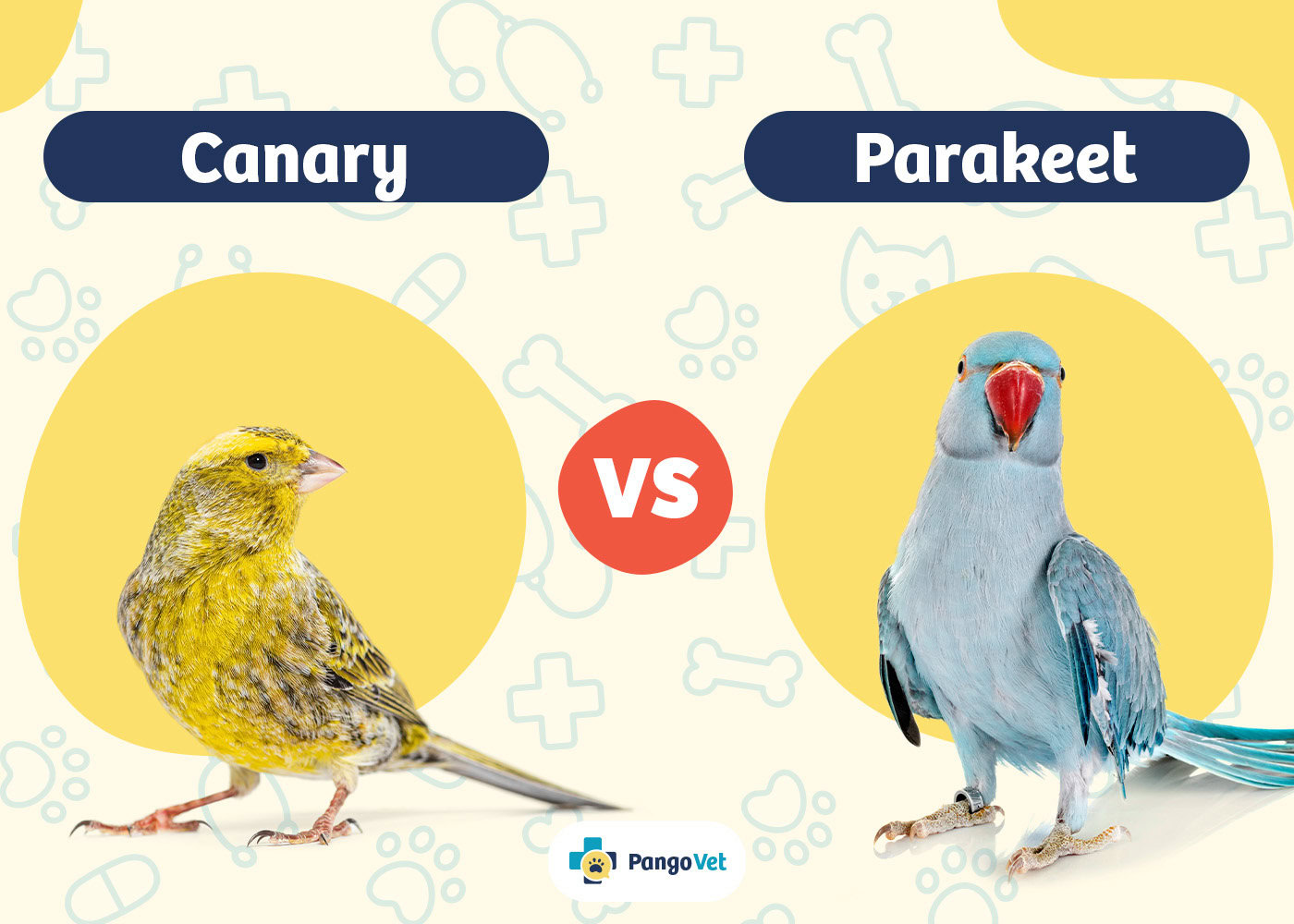VET APPROVED

The information is current and up-to-date in accordance with the latest veterinarian research.
Learn more »Click to Skip Ahead
Parakeets are gregarious birds and they like to live together. However, the arrival of a new bird, such as the cockatiel, can cause some dissatisfaction among those who were there first, especially if the group consists of only one or two birds.
However, the good news is that yes, it is possible to have these two species of birds cohabit together in the same cage. These two species do share common geographical territories in the wild, and are often amicable towards each other as long as food isn’t an issue. However, you will need to take a few precautions and proceed slowly to avoid any sudden changes that could unnecessarily stress your two charming little birds.

A Note About Parakeets
The term parakeet isn’t a specific reference to any single species of parrot. Rather, it refers to several species of small to medium sized parrots with long tails. From a taxonomy standpoint, there’s no consensus about which families or genera of parrots are to be referred to as parakeets.
In this article, the use of the term parakeet is in reference to a budgerigar (Melopsittacus undulatus). If you’re considering adopting another species of parrot which may be referred to as a parakeet, then we would advise you to consult your avian veterinarian for more information about their cohabitation compatibility with cockatiels.
How to House Cockatiels and Parakeets Together
1. Place the Newcomer in Quarantine
Each newcomer (be it a parakeet or a cockatiel) will have to undergo a period of quarantine to ensure that they have no health problems but also for the birds to get used to each other. During the first four weeks, the new parakeet should remain in an individual cage.
During this period, you should not share any worldly possessions of one parrot with the other, and you should also practice appropriate hygiene measures (such as thoroughly washing your hands) after handling each parrot.
Your new parrot should ideally be looked over by your veterinarian both before and after their quarantine period to ensure that they are free of any ailments that may be passed onto your existing parrot. If your new parrot has some concerning ailments (such as parasites) that can be passed onto your existing parrot, they should be treated per your veterinarian’s instructions, and the quarantine period should be restarted after they have completely recovered.
During this period, the two birds will be able to familiarize themselves with each other (often by sound). After this period, you can put the two cages together so the birds can indulge in their first face-to-face contact.

2. Make the First Physical Contact
Keep this arrangement until the birds seem comfortable with each other. The first physical contact without bars must take place in the cage where the birds are brought together. If this is already the birds’ territory that arrived first, anecdotal evidence says that it helps to change the interior elements and accessories to make it different and make it a neutral space. For example, place bowls on both sides of the cage to allow your parakeet and cockatiel to feed separately if desired.
Do not panic if you see your birds hissing or puffing their wings; this is perfectly normal, as long as they do not engage in violent behavior. The situation should calm down once the hierarchy is established. Besides, you could offer your birds millet: this treat to eat in groups will allow them to create a bond and make them forget their conflicts.
If your birds fight a lot, you may need to keep them in separate cages and retry a week later. The larger the cage, the easier the transition will be to set up.
3. Make Sure You Have Enough Space
This step is especially important if you choose to put more than two birds together.
You must give each bird a place of their own to isolate themselves from noise and bustle. The birds must be able to fly and explore every corner of the cage without bumping into it or being systematically stolen from their place on the perches. A bird harassed by their fellows will also need a place to retreat until things calm down: a high perch, a box, a quiet corner. All of this takes up space and it will be easier to keep your birds happy if they live in an outdoor aviary.
Do note that a box shouldn’t be a permanent addition to a cage, as it may promote egg-laying (and the territorial behavior that accompanies nesting).

4. Respect the Specific Dietary Needs of Both Species
It’s also important to take into account the different diets: parakeets, like cockatiels, have their own nutritional needs. All occupants of the cage or aviary must be satisfied and sated. You will need to observe their behavior closely, in case, for example, a greedy cockatiel steals a specific seed in the parakeet’s food.
Interestingly, both of these parrot species have a very similar diet – they are both considered foraging granivores (seed eaters) in the wild. Their dietary needs as pets are not the same as those of their wild counterparts; nonetheless, they can be maintained on a similar diet. Therefore, in this scenario, you’d have to make sure that they both have enough food so that competition doesn’t start over the food you offer them.
5. Monitor Your Birds’ Behavior
Parakeets and cockatiels are smart birds, but this intelligence is double-edged: it makes them very interesting pets but also makes each individual very different. Thus, depending on their personality, a parakeet can be outgoing or shy, sympathetic or slightly aggressive. Naturally, these temperaments will have an influence on the overall balance within the cage.


Final Thoughts
The worst-case scenario would be to have an easily intimidated parakeet coexist with a more dominant cockatiel. In such circumstances, you will have no choice but to intervene, for the good of all occupants of the cage.
This is why you must keep free cages available in case cohabitation is impossible. Note that these cohabitation problems are very rare in practice, but it is better to be prepared for any eventuality.
Featured Image Credit: Stanislavskyi, Shutterstock










